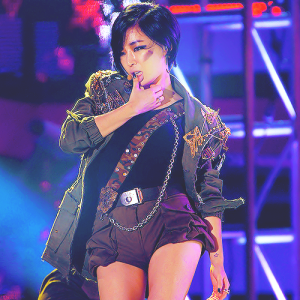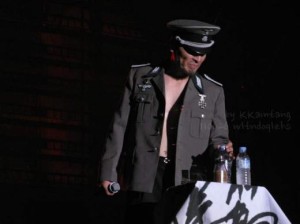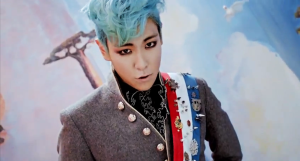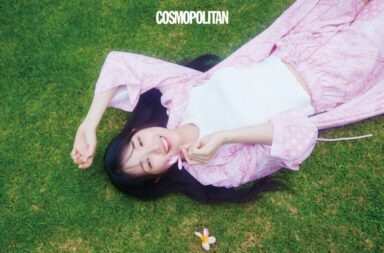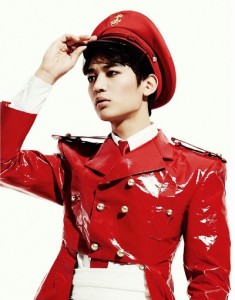 Fashion can make a powerful statement, and in a medium as visual as that of K-pop, the importance of styling is only amplified. Add to that the various socio-cultural and aesthetic sensibilities associated with a military uniform, and the end result is an overabundance of military looks in K-pop that range from serious to quirky.
Fashion can make a powerful statement, and in a medium as visual as that of K-pop, the importance of styling is only amplified. Add to that the various socio-cultural and aesthetic sensibilities associated with a military uniform, and the end result is an overabundance of military looks in K-pop that range from serious to quirky.
In current times the reach and influence of military fashion on contemporary fashion is far-reaching and deep; countless items such as the trench coat, combat boots, and aviator shades that are staples of modern wardrobes had their start as parts of a military uniform. Certain classic silhouettes associated with military wear have been ingrained together with certain associations into our cultural consciousness. While it may be argued that military-inspired fashion grew in the 1960s as a symbol of irony amidst anti-war protests, today, trench coats, elaborate jackets detailed with epaulettes and so on have been absorbed into mainstream fashion trends without looking to fade significantly in relevance any time soon.
In the K-pop context, the inherent visual appeal of a military concept and the genre’s tendency to adapt highly stylised versions of popular styles of dress—from cheerleader to spy to schoolboy– has ensured military fashion’s continued popularity. Although certain groups have maintained the use of military dress in order to express certain statements in their music videos and concepts, more often than not military-style fashion has become merely another style for groups to use in the not-so-vast wardrobe of fashion styles K-pop employs.
Dystopia-themed music videos in K-pop are not uncommon; however, some groups choose to add on to the MV storyline by donning military wear. However, it must be noted that often military wear is used in two different ways—when an antagonistic force is portrayed, such as that of the enforcers of this dystopia, military wear is played straight as these nameless, faceless masses are clothed in identical uniforms and helmets. In contrast, however, the group will be dressed in military-inspired fashion that harks back to its counterculture associations as the military uniform is stylised and to an extent, bastardised in order to draw the difference between our revolutionaries and the enforcers of the status quo.
An example of the above would be in the Brown Eyed Girls’ MV “Sixth Sense.” Set in a vague dystopia under an “anti-music” dictatorship, the ladies of the BEG don variations of military-inspired outfits as leaders of the “Resistance.” Visually a stark contrast is made between the army of identical black-clad soldiers in riot gear and the individualistic fashion of the members. For instance, in the scenes where the members face off with the riot soldiers, Ga-in is clad in a trench coat. However, underneath it she wears a leotard and thigh-high boots, which is further emphasized when she goes up to one of the soldiers, bares her shoulders, and dances right up against his transparent riot shield. The clash of associations as represented in their respective outfits here make for a great visual moment in an MV already populated by many of those.
Speaking of ironic counterculture associations, sometimes the execution of such an attempt may not be well-received. Although he does not belong the the K-pop machine, veteran singer Yim Jae-bum ignited controversy when he donned a replica Nazi uniform during a performance of his song “Paradom” during his concert in Seoul in 2011. While the song expressed the tragedy of people living underground due to nuclear war, Yim took it further by shouting “No Hitler”, “Hitler is dead” and “Heil freedom” during his performance to express anti-dictatorship. Despite what the singer professed as an attempt at irony by wearing a Nazi uniform during this performance, it was nevertheless ill-received as critics of Yim saw it as an expression of totalitarianism and glorification of the Nazis.
Whether his offence was moral (glorifying the Nazis) or aesthetic (he has the right to express whatever he wants, however it was in poor taste), however, depended on the perspective of the critic in question. Either way, the attempted irony of Yim’s Nazi-wear was mostly lost on his audience. Instead, his intended message was lost while the visual shock of the Nazi uniform was piled on with all the subtlety of a sledgehammer.
However, not all statements of military fashion need be made through subversion. It may also be said that other groups choose to more directly counter the military wear by deliberately dressing in bright, outlandish outfits as a contrast to the somber, homogenous outfits worn by the antagonists in MVs. An example that comes to mind would be Big Bang’s “Fantastic Baby” MV—featuring a similar anti-music dystopia, the Big Bang members illustrate their rebellion with outfits incorporating a mishmash of elements and visual references.
The closest any of the members come to wearing a military outfit is T.O.P’s Napoleon-esque military coat; otherwise, the MV is a visual riot of Beetlejuice-inspired pinstripes, sequined tracksuits and the general sartorial outlandishness that makes up the fine line between “mind-blowingly original” and “someone-bleach-my-eyes” that Big Bang so often treads.
In the end, making statements through military fashion, like any other statements K-pop might attempt to make, have both the good and the bad. Does the inclusion of military style in fashion and K-pop trivialise it, or romanticise the nostalgic associations of a bygone era? In short: not more than any other fashion styles, given the fluidity and intersection of mainstream and subculture fashion nowadays. Also, K-pop’s fascination with military uniforms probably have more to do with the latter than former, given the popularity of various uniforms across the genre. If anything can be said though, the military style of dress is unlikely to fall out of fashion anytime soon; there’s vintage, there’s trendy, and there’s military-style—staying around longer than any hair colour in K-pop is going to be.
(New York Times [1], [2], Images via YG Entertainment, Loen Tree, Nega Network, SM Entertainment)
